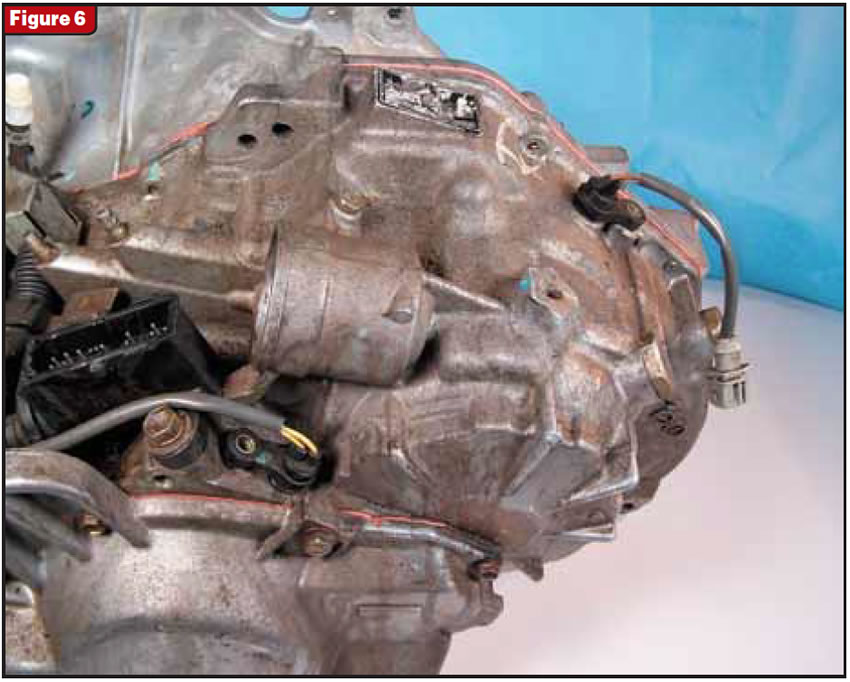
Technically Speaking
- Subject: Good forward gears but slipping reverse before rebuild
- Unit: 50-42 LE
- Essential Reading: Rebuilder, Diagnostician
- Author: Wayne Colonna, ATSG, Transmission Digest Technical Editor
Things aren’t always what they appear to be; at least, that was the case concerning a call we had on a 50-42 LE unit in a Volvo with good forward gears and a slipping reverse before rebuild. It was one of those used-car-lot customers that didn’t want to spend any money but wanted a lifetime warranty. I am sure you know what I am talking about.
Before the call was made, the technician had already referred to the pressure-test chart in Figure 1 and the application chart shown in Figure 2 in his diagnostic process. The line-pressure test checked according to specs, so he scrutinized the application chart before disassembling the unit.
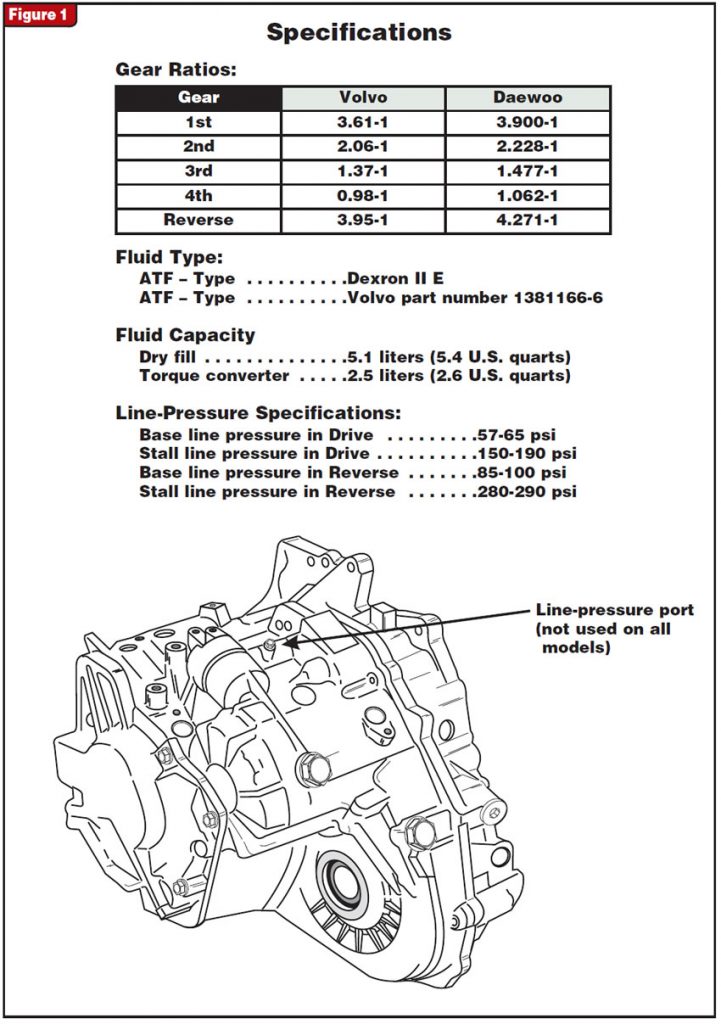
From Figure 2 you can see that the C2 driving clutch, the B3 brake clutch and B4 brake band make up the applied components for reverse. These components then were compared with what is applied in the forward gears, using a “process-of-elimination” approach, since the forward gears were working well.
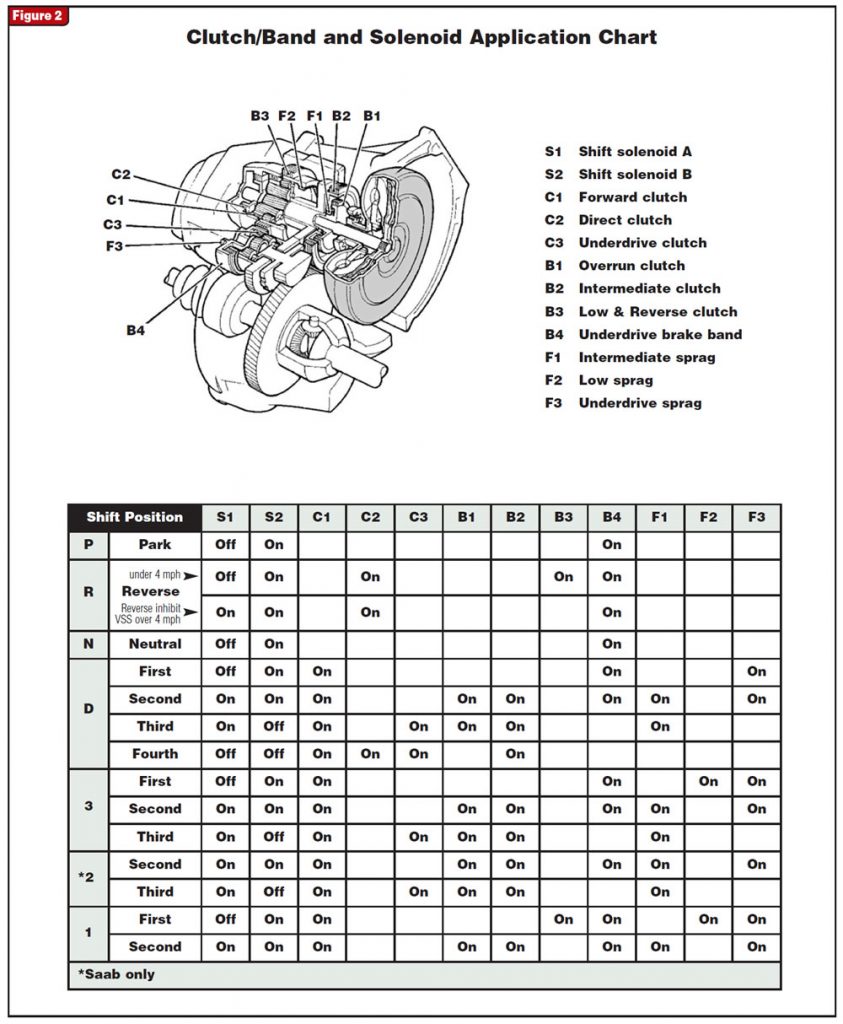
First and second gears use the B4 brake band, third uses the C2 driving clutch and manual low uses the B3 brake clutch for engine braking. On a road test, engine braking in manual low was the only forward movement that seemed questionable, so it was determined that the B3 clutch was the most-likely candidate.
This clutch assembly is accessible through the rear cover after the C1-C2 clutch drum and planetaries are removed. The technician did the removal while the unit was still in the car, and when the B3 clutches were reached, they were pretty as a picture – no hot spots, nothing.
Well, this could mean that they never applied in the first place. Maybe the B3 piston seals were bad or the seal between the valve body and case was bad. So now the technician removed the valve body (while it was still in the car, trying to do the job as inexpensively as possible) only to discover that the B3 seal between the valve body and case was good and the B3 piston air-checked good (see Figure 3). Could it be the valve body? That is when ATSG received the call.
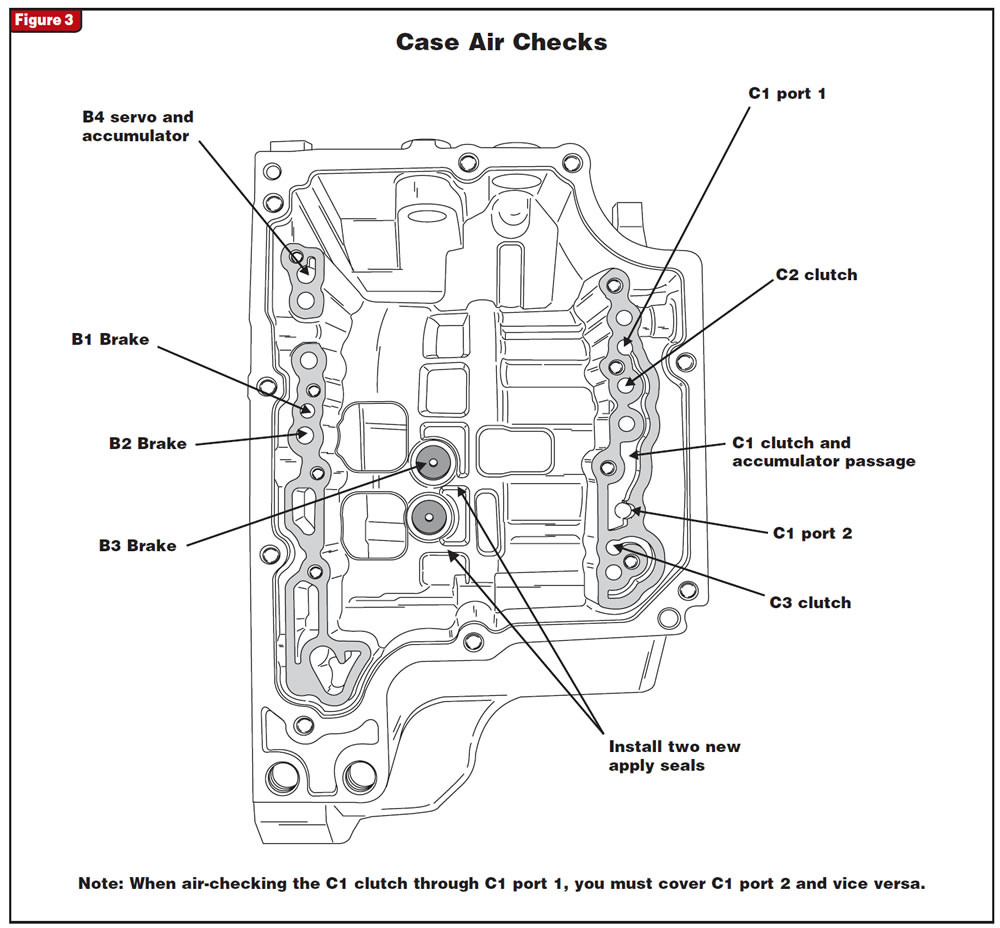
It was not long afterward that the problem was discovered. This technician already had done the majority of the work. He even inspected the C2 clutch drum, since it was out of the transmission, and it too was good. The only component he didn’t look at was the B4 servo and band. He put it completely out of his mind because first and second gears were great.
So he inspected the servo and discovered that the O-ring on the piston was flat. Servo travel was also excessive, so the decision was made to look at the band. This required getting the unit out of the car, splitting the case and removing the underdrive planetary assembly (see figures 4 and 5). Sure enough, the band was worn.
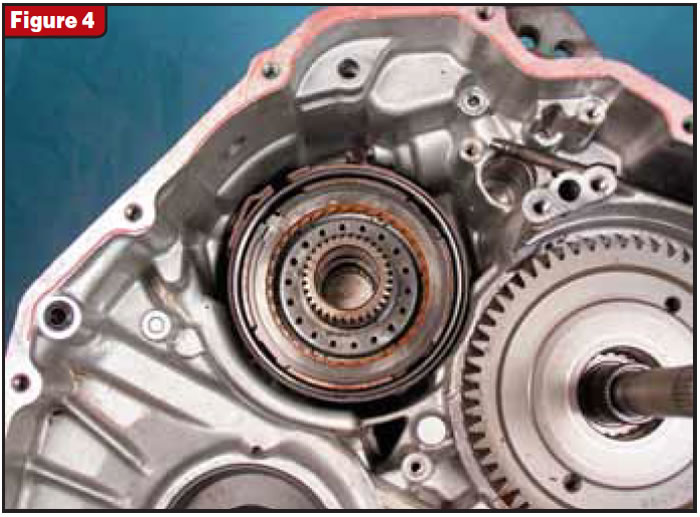
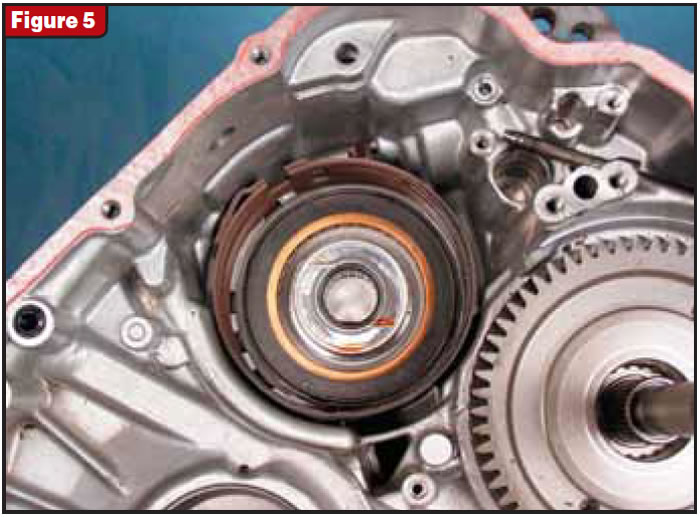
Although the band is used in first and second, it is not needed to obtain those gears. There is still the F3 sprag that will hold. The band is used for additional holding and engine braking in first and second but is absolutely required for reverse to work.
This power-flow design is somewhat comparable to the overdrive direct clutch in Chrysler’s A500 and RE units. These OD direct clutches are applied by that 800-pound spring in first, second and third gears and are released in fourth. They also are applied in reverse. If those clutches fail in any way, a slipping or no reverse will occur, yet all forward gears will be fine; same principle. So you must take care when using an application chart to do a “process-of-elimination” diagnosis, as things aren’t always what they appear to be.
And by the way, since we are talking about things not being what they appear to be, the band anchor is not a fill plug (see Figure 6). If you use it as a fill plug, no reverse and good forward will be your new shop headache!
